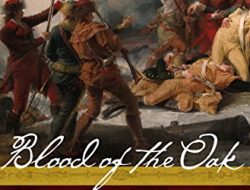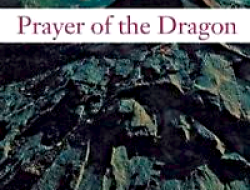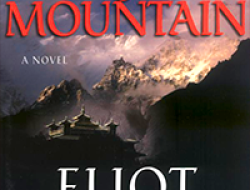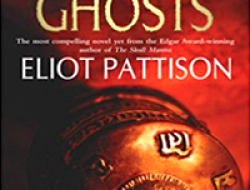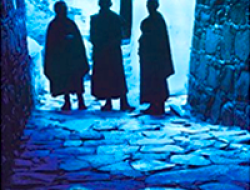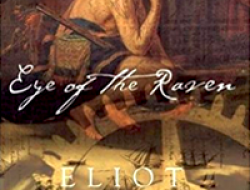
ABOUT THE BOOK
Publisher: Soho Crime (November 29, 2007)
Summoned to a remote village from the hidden lamasery where he lives, Shan, formerly an investigator in Beijing, must save a comatose man from execution for two murders in which the victims’ hands have been removed. Upon arrival, he discovers that the suspect is not Tibetan but Navajo. The man has come with his niece to seek ancestral ties between their people and the ancient Bon. The recent murders are only part of a chain of deaths. Together with his friends, the monks Gendon and Lokesh, Shan solves the riddle of Dragon Mountain, the place “where the world begins.”
AUTHOR’S NOTE
The notion that two peoples separated by more than ten thousand miles and easily as many years could share common roots may at first seem but a romantic fancy, but the existing evidence has given pause to more than a few experts. The common elements between the Tibetans and the Navajo-Dine peoples set forth in these pages are, like all the themes in my books, based upon fact. Long before I considered weaving them into one of my mysteries I had been fascinated not just by the physical similarities between Tibetans and the native peoples of the American Southwest but also by the many common cultural and religious aspects appearing in such disparate geographies. Sand paintings, thunder gods, and religious swastikas are only some of the more readily apparent indicators of possible links. Whether your particular interests lean toward linguistics, medicine, ice age geology, genetics, cosmology, or earwax, you can find fragments of evidence supporting an ancient connection.
REVIEWS
“In his fifth case (after Beautiful Ghosts), Shan Tao Yun – former Beijing special investigator, ex-convict, and now an illegal resident in Tibet studying with Buddhist gurus Lokesh and Gendum – is called to a remote village to investigate two gruesome mutilation murders. The suspect, found at the scene in a deep trance, is a Navajo man seeking ancestral connections between his people and the Tibetans. Shan discovers that the village is ruled by a despot intent on keeping his position of authority at any cost. Once again, Edgar Award winner Pattison demonstrates his mastery of storytelling and rich characterization while brining to light the destruction of Tibet’s mountains by the Chinese and illegal gold miners. Only Colin Cotterill comes close to this perfection. Highly recommended for all collections.” — Library Journal
“Eliot Pattison’s fifth mystery to feature exiled investigator San Tao Yun, Prayer of the Dragon is a mesmerizing tale of murder and deception, set in a remote region of Tibet.
Fearful of drawing the attention of the official government in Beijing, Shan, a former government official who was once condemned to a village at the base of the sacred Sleeping Dragon Mountain in Tibet, to investigate a series of grisly murders in which the victims’ hands had been severed and removed from the scene of the crime. A man who had descended from the mountain covered in blood is the only suspect, but he’s a foreigner: A Navajo from America. Blackmailed into finding the killer, Shan must also discover the motive for the murders. But the secrets of Sleeping Dragon are not easily learned and the danger precedes every step.
One just doesn’t read Prayer of the Dragon; one participates with Shan on his extraordinary quest for the truth. This is not a book to be read quickly. The atmospheric setting and crisply written narrative are meant to be savored. It is relatively long at over 350 pages, but there are a few unnecessary passages. And the plot is fairly complex. At some point, however, the mystery of the murders becomes somewhat secondary, replaced by the wonder and awe of the mountain and its centuries of history. Shan’s journey is fraught with peril along the Bon kora, the ancient path to the summit, and the certainty of the unknown affects both Shan and the reader.” –Mystery Books


